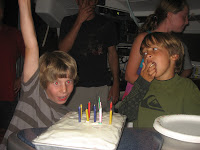Many have wondered what we’ll do for Passover this year, which begins with the first Seder, or ceremonial meal, this Monday night. Usually, we clean our home thoroughly, getting rid of any leaven which is prohibited during this eight-day Jewish holiday. Given that we have stores of food aboard our boat to last for the year of cruising, we aren’t about to give it all up. Cruising is, after all, about compromises. And so, we have done a thorough cleaning of the boat, including the bilges (the area below the floor boards where we store a lot of our ‘extras’). And we’ll get rid of any obvious leaven (like bread). Otherwise, other items such as pasta, beans, rice and other grains will be simply kept out of sight. My dishes will get a good bleach cleaning just before the holiday begins. [As an aside, I’ve always wondered when non-Jewish people do their deep cleaning. If not for Passover, I’m not sure I’d do it at all!]
Back to leaven. Without beans and rice in Mexico, what shall we eat? Matzah, of course. Plenty of it. And as an FYI, if you are ever cruising in Mexico and placing an order for matzah sight unseen, boxes come in kilograms, not pounds. In other words, my order of 15 boxes of matzah for the week arrived, weighing more than twice what I expected. And so, when I say we’ll be eating plenty of matzah, I’m not kidding. We’ll be making matzah farfel, matzah and eggs, we’ll make cake meal out of matzah somehow, we’ll make matzah brittle, matzah pizzas, matzah this and matzah that. And perhaps even use matzah for fish bait. And even then we’ll have loads of leftover.
As you may know, matzah makes a lot of crumbs. Matzah on a boat is like bringing your child’s sparkle project home. Or throwing confetti in your home. Or bringing a bucket of sand home from the beach and sprinkling it around your house. You’ll find it for days, perhaps years later. In a boat, this is somewhat troubling, and we haven’t resolved this issue yet.
Meanwhile, we placed our order for Passover items and kosher meat with the kosher grocer in Mexico City, Kurson Kosher, which ships anywhere in Mexico. The experience retrieving the order from the Manzanillo airport was a true Mexican experience. We befriended a couple on the beach in Santiago Bay just north of Manzanillo. This couple has a car, and they offered to take us to the airport to pick up our ‘package’. Little did we know that this ‘package’ was actually eight large boxes. Michael got to the airport at around 2 p.m. only to be told that the package was not there. Michael then insisted that the person working the freight desk call Kurson Kosher in Mexico City to get the waybill number. When searching for the package by waybill, the attendant could not find it as he had recorded the number incorrectly. Michael then called Mexico City himself and got the correct waybill number. Once the attendant confirmed that the package had indeed arrived, he told Michael that the only person with a key to the freight holding room was on lunch from 1 to 5 p.m. (gotta love that Mexican siesta). I’m not exactly sure how Michael managed to get the boxes out of the freight room without waiting until 5, but he arrived back at the beach 3 hours later, and we loaded all 8 boxes (in two trips) into our dinghy to transport back to our boat. Somehow we found room for all of it.
My sister Maureen and her husband Jason and two kids, Daniel and Zachary, arrived yesterday in Tenacatita to join us for Passover. They brought some non-perishable Passover items to supplement what we couldn’t get here (thankfully, nothing containing matzah). Our seder will be small this year – only 8 of us compared to the 28 last year – but will certainly be a night different from all others. We’ve pulled several items out of our holiday box: hagadahs (the ‘guidebook’ that leads you through the meal), seder plate (for the ceremonial items that go on your table), a skit of the Passover story (Israelites’ exodus from slavery in Egypt), and a CD of Passover songs. We’ve gone through the markets searching for items to create our own ‘plague bag’ (we’ve found frogs, locusts, cattle disease, wild animals; we’ll improvise the rest). I purchased a square plate for matzah, and bought new little shot glasses for the 4 cups of wine. I haven’t started my cooking yet and the seder is in two days, but given our small numbers, I’m making much much less than I normally do. Store-bought gefilte fish, and no sweet and sour meatballs. But we’ll have brisket and chicken matzah ball soup. Yummy charoset. And if I can find a boat in this anchorage with a blow torch, I’ll be making my mother-in-law’s famous frozen lemon desert (I don’t have a broiler to brown the meringue).
And of course, we’ll have plenty of matzah.
Signing off from Tenacatita Bay,
Barbara







